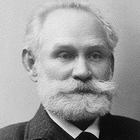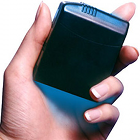Radio stations can condition their audience to listen more often and longer – or to tune-out and avoid them. It’s one of the lessons from Danish PPM research.
PPM’s electronic audience measurement not only changed the American radio industry. Program directors in European radio markets also face challenges when they see the results of minute-by-minute listener behavior. Here’s what researchers from Denmarks public radio broadcaster learned from Portable People Meter research.
PPM ratings in Denmark
PPM was introduced in Denmark in 2008. Over 90% of the radio market in Denmark is now using the electronic audience measurement system to research the radio ratings. These are based on a sample of 1.000 participants who carry a people meter. National public broadcaster Danmarks Radio (DR) operates 4 national radio channels on FM and DAB (programs P1, P2, P3 and P4) and their media researchers Peter Niegel and Dennis Christensen shared one PPM case study per station at Radiodays Europe 2012.
“Every time we passed 4 minutes,
listeners started to drift”
 Analyze entire radio program
Analyze entire radio program
With the introduction of PPM, News-Talk station P1 had a loss in share – especially during mornings. “It was a bit of a worry, because the rest of the day was actually doing quite well”, Peter Niegel (photo) recalls. It was decided to do desk research to break every program segment into 5-second parts. The team created a ‘program map’ that showed soft and hard content zones, how many (and which) hosts were on-air, how long every segment took, etc.
Limit program element duration
“All things we could think of we put into Excel files, and then we put it on top of the PPM data”, Niegel explains. “Doing this, we could find all the concurrencies. We found out a lot of things, but mostly that every time we passed 4 minutes, listeners started to drift.” They decided to reduce every program element to a maximum run time of 4 minutes. It proves that in radio, small programming adjustments can have a huge effect: “We almost doubled our share in the morning”.
“Listeners are actually reacting to what you’re doing –
even if you’re not doing it.”
 Remember Pavlov’s Dogs experiment
Remember Pavlov’s Dogs experiment
“What do radio listeners have in common with dogs?” is a compelling question that Dennis Christensen has for the audience. He refers to Nobel Prize winner Ivan Pavlov (1849-1936) (photo) who discovered conditioned reflexes while he was researching digestive systems. When Pavlov fed his dogs, he rang a bell. After a period of time, he only rang the bell and the animals started drooling as they were expecting a meal.
Realize radio conditions listeners
The classical music program on P2 was interrupted 6 days a week at 8:05 AM for a morning church service. PPM-data proved what you would expect: many listeners tuned out at this break. Interesting is: there was no church service on Sunday, but people switched off at 8:05 then as well! “During weekdays and Saturdays we have taught our listeners that something is happening to their radio channel at this precise moment”, Christensen explains. “Listeners are actually reacting to what you’re doing – even if you’re not doing it.”
“There was a big difference between
perceived listening and actual listening”
 Avoid attention-creating program breaks
Avoid attention-creating program breaks
Stations often program their news bulletin on top of the hour as it seems a natural moment to do so. But when CHR channel P3 was looking at their PPM data, they were surprised that actually many people left as soon as the news jingle was being played on-air. Peter Niegel says it really puzzled them why. “Listeners still told us that the news was the most important thing for them, so there was a big difference between perceived listening and actual listening.”
Embed news in program
They decided to observe listener behavior to find out what happens when news comes on-air and concluded:
- The top of the hour is a natural switch-off moment because it’s an appointment time. “Every time we ran the news jingle, people would say: oh my God, it’s eight o’clock, I have to go!”
- News is a function, not a program. “You want the latest; you want to be updated. You don’t want an elaborate program suddenly hit on the flow – because you’re listening to radio.”
- News is an interruption of the program flow. “News is not the boss in radio – radio flow is. We had to ease the news bulletins into the flow.”
- News bulletins with fixed lengths lead to bad news stories. “Keep it sweet, keep it simple. If you have news, tell it. If you don’t, don’t.”
According to Niegel, “the implemented changes cut the dips [on top of the hour] by half.”
“We hand over 7 points on a silver platter
to our commercial competitors”
 Avoid non-format music specials
Avoid non-format music specials
The last case study comes from Full Service AC station P4, targeted towards adults in their forties and above. With an incredible market share of 43% on average, it’s by far the most listened-to radio station in Denmark. “For reasons which I can’t go into here, we decided to put on a classical music show on Sundays after midday with 45 minutes of classical music”, says Dennis Christensen (photo). “Of course, this has massive repercussions.”
Keep audience locked in
Just during these 45 minutes, P4 is losing “almost instantly 10 share points” which equals about 20 percent of their audience. Even worse is that some of these people don’t just turn off their radio – a PPM-lesson is that in general most “listeners don’t switch past a lot of stations trying to find better programs; they switch off”. But in this case, more people than usual began to sample other stations. “So we are handing over 10 share points”, Christensen caluculates, estimating that “3 of the points go to our other stations, but we hand over 7 points on a silver platter to our commercial competitors.”
“We are slowly but surely killing radio”
 Protect entire radio business
Protect entire radio business
The interesting thing is that it not only affects P4: during the classical music special, total radio listening (to all stations) decreases as well! (Probably because P4 has such a big share? When 20 percent of their audience tunes out – which Danish listeners do more often than looking for another station. That’s a significant loss in (potential) audience for every station on the dial.) Dennis Christensen: “We are slowly but surely killing radio in these minutes”.
Create detailed PPM analyses
Peter Niegel thinks that the “Portable People Meter can do a lot of good things” for radio stations because PPM makes problems
- Identifiable. “Earlier, we had 4 markings in diaries – 4 times an hour, listeners would tell us what’s going on. Now we have 60 markings an hour, which helps a lot.”
- Tangible. “We understand the length and depth of a problem.”
- Accessible. “It indicates where to find the solution: what knowledge do I miss out on, what do I have to put on the PPM to get the result I want?”
- Controllable. “When you go in and you make changes, you can instantly see what these changes mean to your flow. You can follow exactly what you’ve been doing.”
- Explainable. ‘When we have to communicate to all the program departments, we can show: before you did this – now you do this.”
“PPM is giving us a much better perspective
on how to build radio formats in the future”
 Utilize PPM programming insights
Utilize PPM programming insights
PPM’s main benefit is that “from this knowledge of solving problems we also build new knowledge for the future”, Peter Niegel says. Not only from the level of analyzing one show or one station, but also from a higher altitude perspective: “We can see how radio is doing compared to things like Spotify and can see how it does on DAB, online, and so forth. So PPM is giving us a much better perspective on how to build radio formats in the future.”
Read also:
- Radio Programming: Align Your Content With Your Brand
- PPM: Radio Programming For Heavy Listeners
- Listener Expectations Influence Ratings
Stay tuned, follow us @RadioILOVEIT and click below to share this post:





Add Your Comment